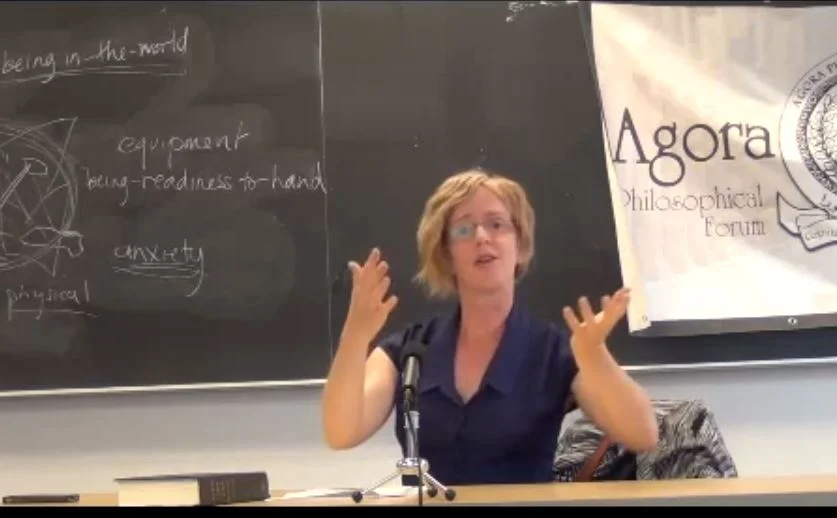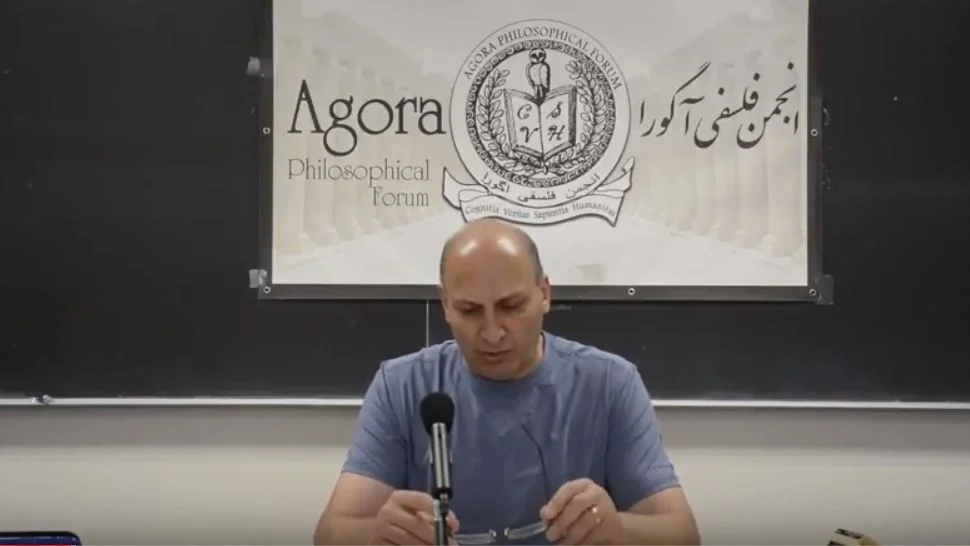نشست 1 تا 3
و جلسات ویژه
Heidegger on Being-in-the-World, Anxiety, and Authenticity
19 July 2014
with Kym Maclaren
Recommended Reading: Heidegger, Being and Time, Sections 15 and 16 and 40 , Reading and Time
1. Heidegger argues that, for the most part, we encounter (non-human) beings in the world around us not as things, but as “equipment” that is “ready-to-hand.” What does he mean by “readiness-to-hand” and how is this different from understanding the world as made up of things or objects that are separate from human subjects?
2. Heidegger claims that anxiety or the experience of not-being-at-home “individualizes” and brings Dasein back from its fallenness or inauthenticity. What does it mean to “individualize”? And how, exactly, does anxiety do this?
Kym explains about her talk:
We humans are, Heidegger notes, the beings for whom being is an issue: not only in our intellectual reflections, but also in our practical dealings with the world, we are concerned most fundamentally with questions about what it is to be, and who I am to be. And yet, both in our intellectual efforts and in our everyday living, we tend to get caught up in ways of interpreting ourselves and reality that cover over those most fundamental questions and hide us from ourselves. Heidegger turns to phenomenological method to address this problem. Phenomenology, he proposes, is a method of inquiry that allows what is to reveal itself on its own terms, in its very being. Heidegger’s project, then, in his most influential text, Being and Time, is to reveal being in its being. The starting point for this, however, is human being, or what Heidegger calls “Dasein”—since any theories that we might develop about being are rooted in our own, human, living engagement with other beings, ourselves and the world. Phenomenology must begin, then, with an elucidation of our lived experience; we must ask how it is that beings show themselves—and how it is that our own being or existence shows itself—within our everyday experience. This talk will offer an introduction to those two questions. Contrary to assumptions inherited by our intellectual tradition, we will see that beings in the world reveal themselves to us not primarily as objects over against us, separate from us, but rather as “ready-to-hand”; and our living relation to the world is not one primarily of knowing, but rather of intimacy or familiarity and “being-at-home.” And we will find that our own being—indeed, our own individualized existence—is disclosed to us in a fundamental way through anxiety and the feeling of not-being-at-home. Together, these two revelations will help us begin to understand (1) why Heidegger thinks we need to understand human existence as “Dasein” or being-in-the-world, (2) why we live mostly in inauthenticity, and (3) what it would mean to be authentic.
سخنرانی
پرسش و پاسخ
ذات حقیقت در فلسفه ی مارتین هایدگر
تاریخ: 2 اوت 2014
همراه با آرش عفتی
مطالعه قبل از نشست: در باب ذات حقیقت هایدگر
Heidegger, On The Essence of Truth
هایدگر پیش فرضهایی که انسان با آن در جهان حاضر می شود را مانع گشودگی دازاین به ذات چیزها و درنتیجه مانع پیدایی حقیقت می داند؟ در زندگی روزمره چه مصداقهایی از این ایده داریم؟ یکی دیگر از موضوعات مهم فلسفه هایدگر بحث "زبان" است. زبان چگونه موجب پنهانی یا وسیله ناپنهانی می تواند باشد؟
سخنرانی
پرسش و پاسخ
نشست 1: هستی و زمان هایدگر
تاریخ جلسه: 9 اوت 2014
Recommended Reading: Heidegger's Sein und Zeit - First Session
سخنرانی
پرسش و پاسخ
نشست 2: هستی و زمان هایدگر
تاریخ: 16 اوت 2014
Recommended Reading: Heidegger's Sein und Zeit - Second Session
سخنرانی
پرسش و پاسخ
نشست 3: هستی و زمان هایدگر
تاریخ: 23 اوت 2014
Recommended Reading: Martin Heidegger Basic Writings. from Being and Time to The Task of Thinking. PP 373-292
پرسش و پاسخ











